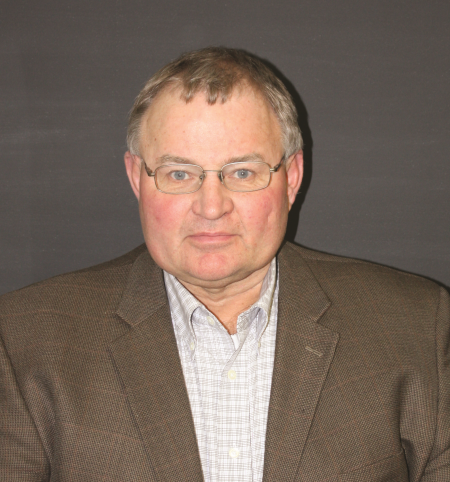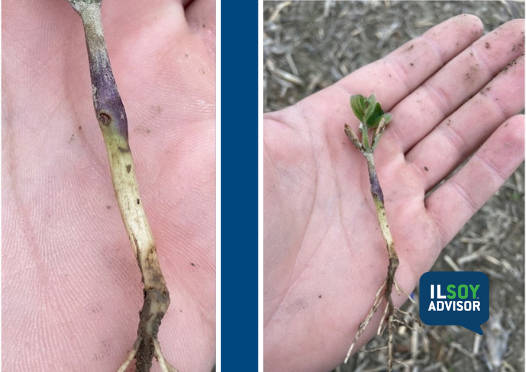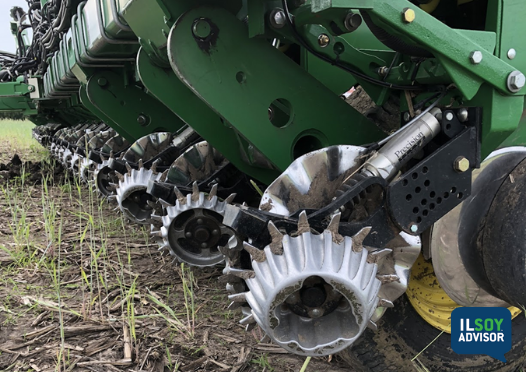ILSOYADVISOR POST
Agronomy: Consider Planting Depth When Planning Plant Population
Soybean seeding depth from 1 to 1.5 inches has long been considered optimal. But that recommendation is changing to “deeper is better”, but only in the right soil conditions.
I wrote a blog for the ILSoyAdvisor a while back that pointed out soybeans can be planted at a depth of 1.75 to 2.25 inches into soil that has more consistent moisture and temperature, leading to more even germination. This was based on multiple years of research conducted by the University of Nebraska when heavy saturated soils in the spring aren’t common.
Another recent agronomy report states “Soybean planting depth can affect plant densities and yield even under ideal emergence conditions.” The authors of the study conducted replicated field studies on three New York farms with different soils to evaluate soybean establishment and yield at 1.0-, 1.5-, 2.0- and 2.5-inch planting depths.
The optimal soybean depth range has long been considered to be very narrow and no deeper than 1.5 inches. Seed costs have doubled in the past 10 years, forcing farmers to reduce their planting population. In addition, growers are adding on seed treatments to protect seed and seedlings and get as many seeds to germinate as possible. Planting at the right depth based on soil conditions can help ensure that more seeds make it to the seedling stage.
This recent report stated, “Late May and early June conditions were generally wet and warm at all sites in both years, so weather conditions were not conducive for seed desiccation at the 1.0-inch depth, nor conducive for soil crust development and subsequent hypocotyl damage to deep-planted soybeans. Nevertheless, deeper seeding depths (2.0- to 2.5-inch range) consistently decreased early plant densities at two sites with distinctly different soil types in both years, even under ideal emergence conditions. At the third site, however, where soybeans were no-tilled, seeding depth did not affect early plant densities in either year, except at the 1.0-inch depth in 2014 when one planter unit had trouble penetrating the soil. This underscores the importance of seed depth monitoring of all rows when planting soybean.”
They concluded:
- The 1.0-inch seeding depth is probably too shallow on lighter, excessively drained soils and well-drained silt loam (seed can dessicate too easily).
- The 2.5 inch seeding depth can be too deep in some soil instances.
- The 1.5-inch seeding depth resulted in excellent early stand establishment.
- Early planting (into more marginal soil conditions) showed a negative response to deeper planting.
- Later planting (into better soil conditions) showed a more favorable response to deeper planting.
- Soybean yield showed site-specific yield responses to seeding depth that were based on soil type and moisture levels during germination. Site-specific responses underscore how complex it is to identify a single optimum seeding depth for soybeans when variability exists across the field.
The citation for the article is: Inconsistent Yield Responses Add Complexity to Identifying Optimum Soybean Seeding Depths. William J. Cox and Jerome Henry Cherneya. Agronomy Journal 2016;108(4):1479-1485.
Agronomist Daniel Davidson, Ph.D., posts blogs on agronomy-related topics. Feel free to contact him at djdavidson@agwrite.com or ring him at 402-649-5919.





Comments
Add new comment